In the wild, Banggai cardinalfish are found in shallow water reefs and seagrass beds. They are primarily nocturnal and feed on small crustaceans and plankton. In captivity, they can be fed a variety of foods including pellets, flakes, and frozen or live foods. Unfortunately, the Banggai cardinalfish is currently listed as endangered by the International Union for Conservation of Nature (IUCN). Their natural habitat is threatened by overfishing, habitat destruction, and the aquarium trade. As a result, efforts are being made to promote sustainable breeding practices and reduce the collection of wild specimens. The Banggai cardinalfish is a beautiful and popular aquarium fish that requires proper care and attention. However, with their endangered status, it is very important for the aquarium industry to promote sustainable breeding practices and reduce the demand for wild specimens. Exactly for this reason I wanted to reproduce the kauderni and I invite others to do the same.
So I want to share with you to my adventure with kauderni Reproduction.
When I decided to venture into breeding Banggai cardinalfish, I turned to my trusted store in Italy, Reefinternational in Gallarate. With great professionalism, they provided me with the necessary information about the differences between males and females, explaining their distinctive characteristics. They selected a young pair for me, ensuring compatibility and higher chances of successful reproduction.
To prepare the pair for breeding, I followed a precise feeding regimen and provided them with appropriate hiding spots within the aquarium. I also made sure to maintain a tank without other fish that could disturb the mating process.
After a few months of care and patient waiting, I noticed that the pair started to dance, a typical behavior associated with the mating of Banggai cardinalfish. This was an exciting moment, as I realized the reproduction process had begun.
A few days later, I observed that the female had eggs in her mouth. This behavior, known as mouthbrooding, is characteristic of female Pterapogon kauderni. It was an incredible moment, knowing that the female was protecting the eggs in her mouth.
The most fun, exciting, and at the same time challenging part was collecting the eggs. Being a species that practices mouthbrooding, the female holds the eggs in her mouth for a period of time until the fry are ready to emerge. To ensure successful breeding, I had to be very careful and patient during the egg collection process, trying not to harm either the female or the eggs themselves.
The fishing of the youngs took place at 3 in the morning and I used a small net. The male started to spit the little kauderni after about 30/35 days. The fishing lasted until 04:30 in the morning and I couldn’t catch two of them. But one was found in the sump the next day.
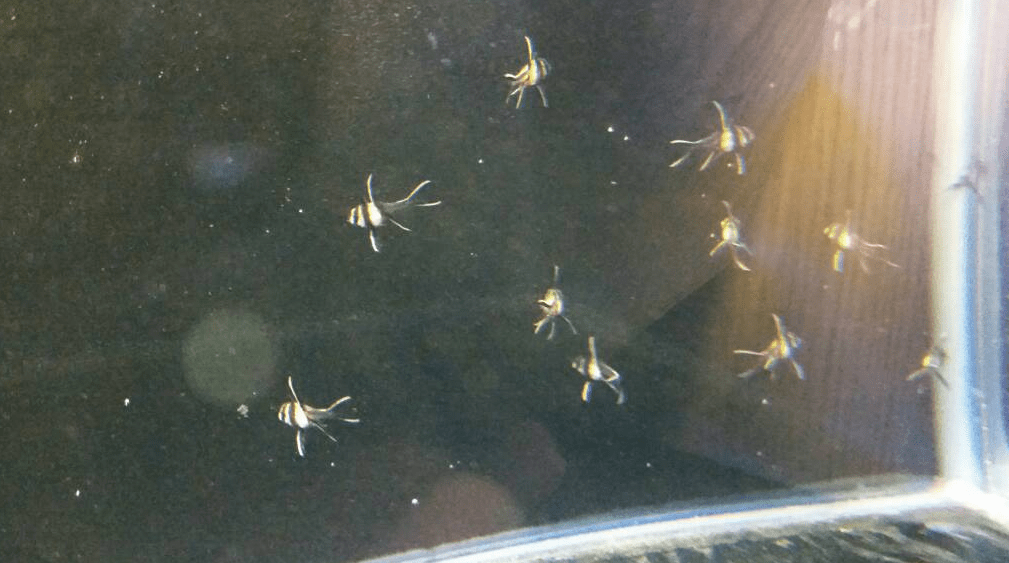
Dedicated tank
As you can see in the photos below I preferred to have a dedicated tank (Connected to the main one). Important: This must be kept constantly clean and always illuminated (dedicated light) in order to not get scared the little Kauderni (Without lights in past the death ratio was very high).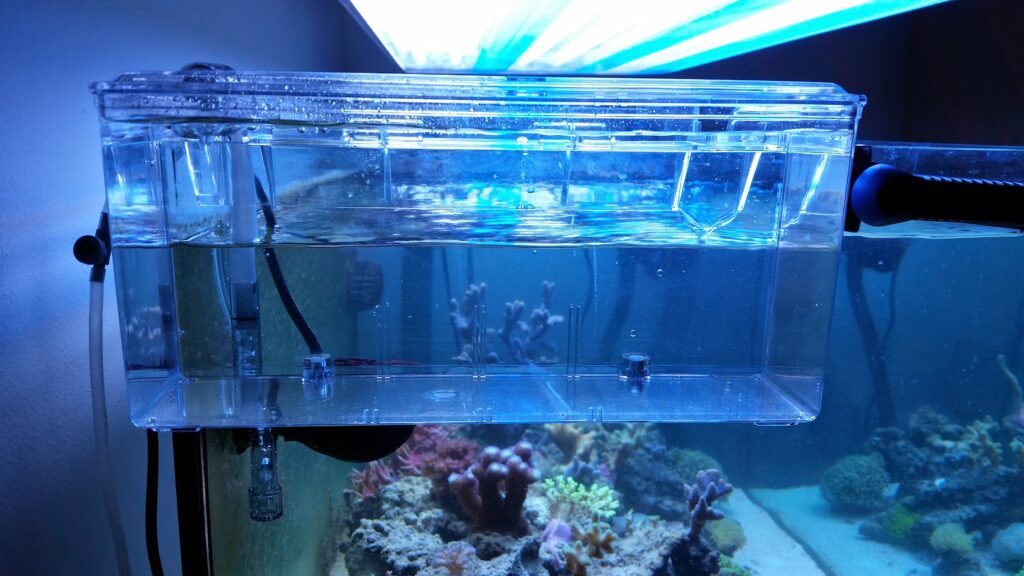
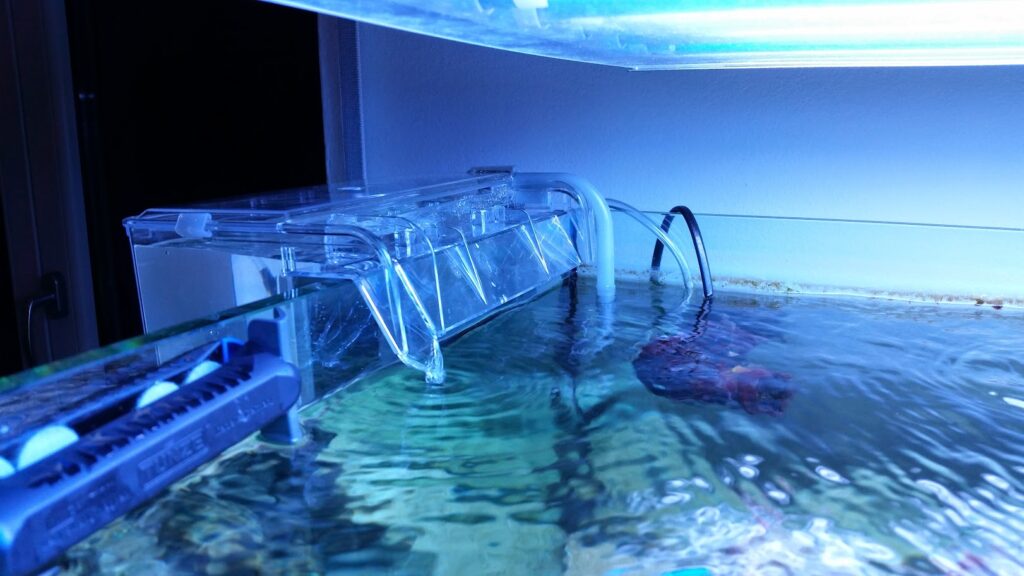
Prepare the food…
Artemia Salina Brine Shrimp. I used two bottles to always have food available for the little Kauderni. Aerator and temperature are really important. The hatching speed is about 24 h. Online you can find hatchery (Like this one) but I preferred to do some DIY 😉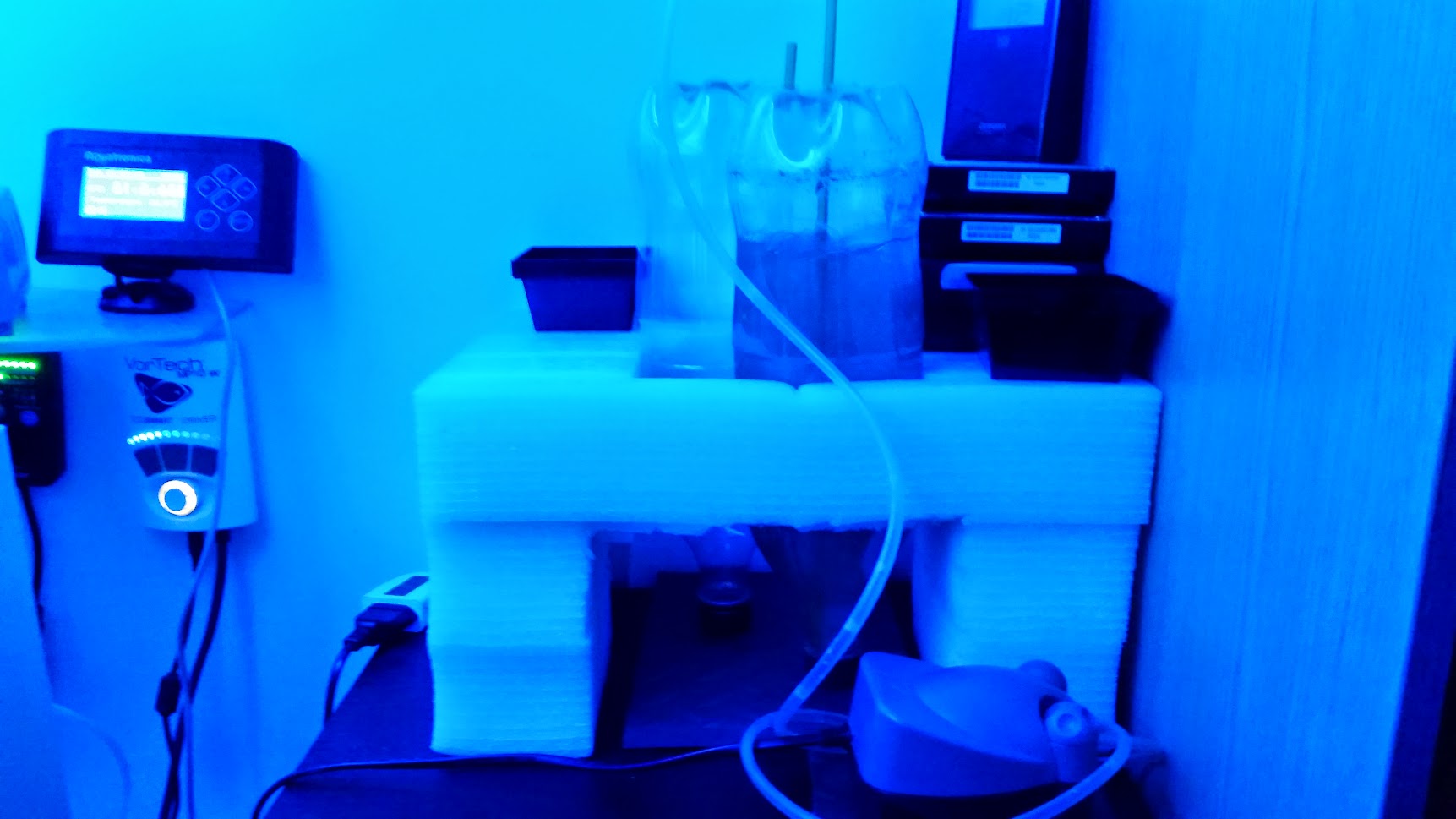 The process is really simple:
The process is really simple:- Put the salted water in the bottle
- Add 2 teaspoons of cysts (the quality of the cysts is another important point).
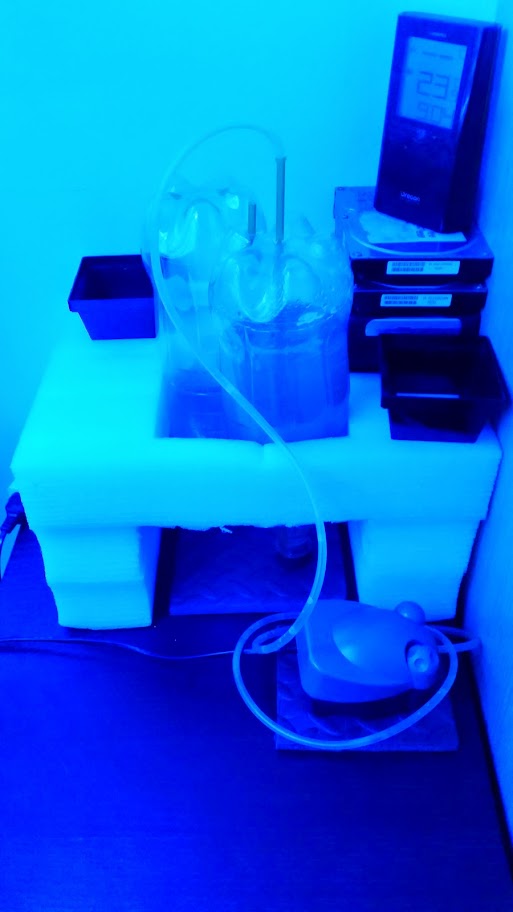
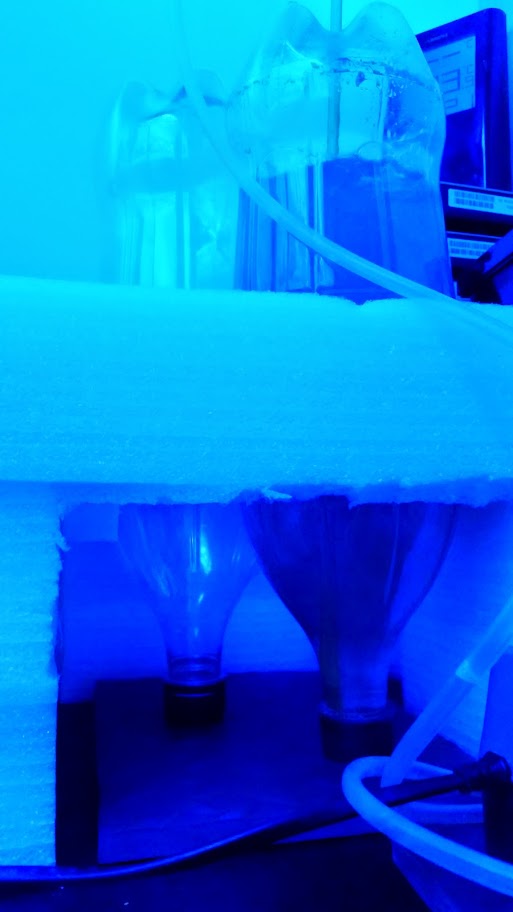 The first time i had several unexpected death.(In particular, after about two weeks) I solved it by adding some vitamins(Idroplurivit) to the artemias. It was a bit tiring but I’m satisfied. The next step is to dedicate a tank dedicated to the Kauderni and some Diadema setosum in order to protect the little Kauderni.
The first time i had several unexpected death.(In particular, after about two weeks) I solved it by adding some vitamins(Idroplurivit) to the artemias. It was a bit tiring but I’m satisfied. The next step is to dedicate a tank dedicated to the Kauderni and some Diadema setosum in order to protect the little Kauderni.It is important to approach breeding with care, providing the pairs with a suitable environment and a balanced diet. Relying on specialized stores and experienced professionals like I did with Reefinternational can be of great help during the process of selecting and preparing the pairs. Despite the challenges faced, the joy of witnessing reproduction and the growth of fry makes all the work and efforts involved worthwhile.
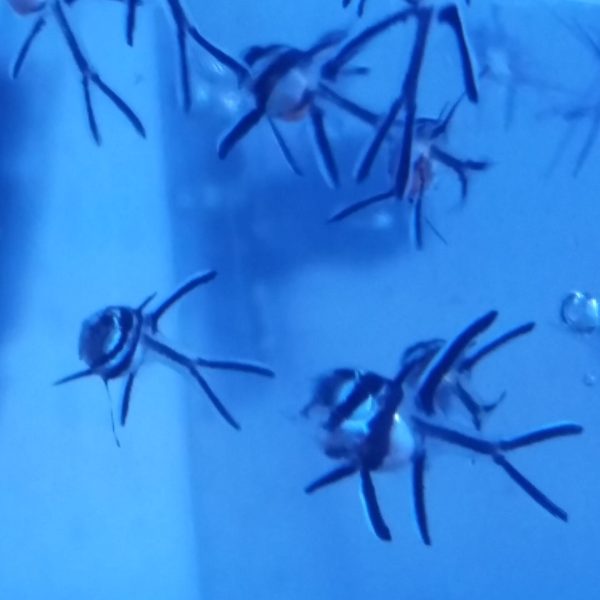
Please follow and like us:
